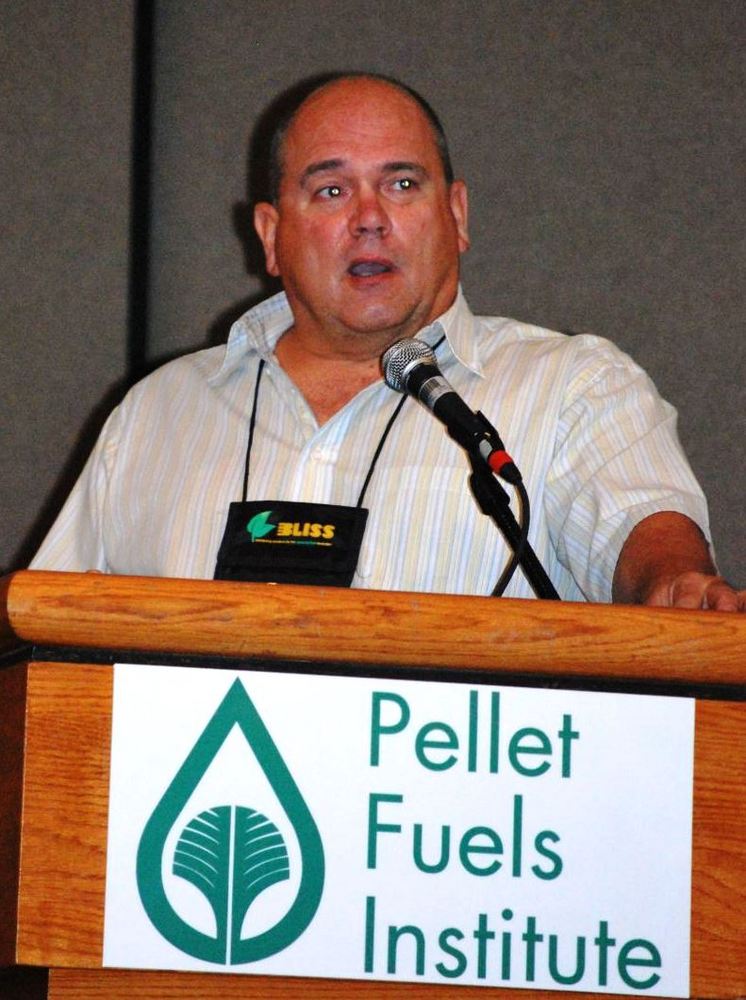PFI conference: Continued growth expected in pellet market







Sue Retka Schill
July 31, 2013
BY Sue Retka Schill
The outlook for growth in the fuel pellet market is still positive, although it has been tempered some from earlier overly-optimistic projections, attendees at the annual Pellet Fuels Institute conference learned. The conference was held July 29-30 in Asheville, N.C.
The U.S. domestic pellet market has tracked the natural gas market relatively closely, pointed out Seth Walker, an associate economist with RISI Inc. When natural gas prices were trending higher a few years ago, interest in the pellet market grew, with pellet stove sales reaching 100,000 per year. When the natural gas market nosedived in the last couple of years, pellet stove sales dropped by half, where it has been maintaining. Walker estimates the U.S. currently has about 845,000 wood pellet stoves, creating demand for about 2.33 million tons product. He also projected that 50,000 to 60,000 stoves would be added annually in the next few years with the strongest markets for pellets occur in regions with local wood supplies and no natural gas pipelines.
Daniel Saloni, assistant professor in forestry at North Carolina State University, pointed out that both aggressive and more conservative economic models for the pellet industry are predicting growth. He also described an economic model developed at NCSU that determined biomass and labor are the most important cost drivers for the pellet industry, and while energy is a lower sensitivity cost, it represents an important cost reduction factor. The model confirmed both small and large pellet production in the U.S. is profitable.
Advertisement
Advertisement
The global market for pellet fuel is at 22.4 million metric tons, said Gordon Murray, executive director of the Wood Pellet Association of Canada. Europe is almost self-sufficient in pellet production with North American production coming in at half that of Europe and Russia the next largest. In Europe, the United Kingdom is the No. 1, importer bringing in 855,000 metric tons (mt) from Canada last year and another 475,000 mt from the U.S. While Canadian pellets dominate the U.K. market, the U.S. is the biggest supplier to the Netherlands and Belgium. Denmark and Sweden receive the most pellets from Russia. He predicted that there will be a new surge for industrial pellets when several power conversions come online in 2015 including Drax and Eggborough in the U.K., EON Langerlo in Belgium and Delta in the Netherlands.
While the EU power market has gotten much attention, Murray pointed out that the heating market comprises 40 percent of the EU pellet market, with no subsidy required. “Pellets are 30 percent cheaper than heating oil,” he said. Currently, 90 percent of Canadian exports are being shipped from western ports and going through the Panama Canal, but an effort is underway to organize the smaller pellet producers in eastern Canada to pool resources and product to develop export facilities in the east.
Advertisement
Advertisement
Arnold Dale with Sweden-based Ekman & Co., said such cooperative efforts among smaller producers is also one way for them to handle the sustainability and EN Plus standards requirements to export into the EU. He explained that Ekman, with its main business in pulp trading, started working in the bioenergy space in 2008, supplying both industrial and retail markets. “The consumer market in the EU has grown into a very stable market,” he said. “It is no longer seasonal. People prefer to buy pellets in the summer months.”
The annual increase each year in the EU has hovered around 700,000 tons of pellets for the past few years, Dale said, but is projected to exceed 1 million tons in 2013, based on the sales of boilers and stoves. Italy is showing the most rapid growth currently, having added over 1 million pellet stoves in recent years. Consumption is expected to exceed production in both Austria and Germany this year, which will add to import demand.
Amanda Lang, senior consultant with Forisk Consulting LLC, closed out the two-day conference with an analysis of projected demand from announced bioenergy projects in the U.S. No advanced biofuels were included as yet, she said, because none had met the company’s criteria for viability, as did only half of the proposed pellet facilities. The criteria included such factors as the use of known technology and project financing, among others. When potential demand is totaled, she said, “the forest products industry will continue to be the vast majority of the forestry market and bioenergy will comprise about 9 percent.”
Upcoming Events





